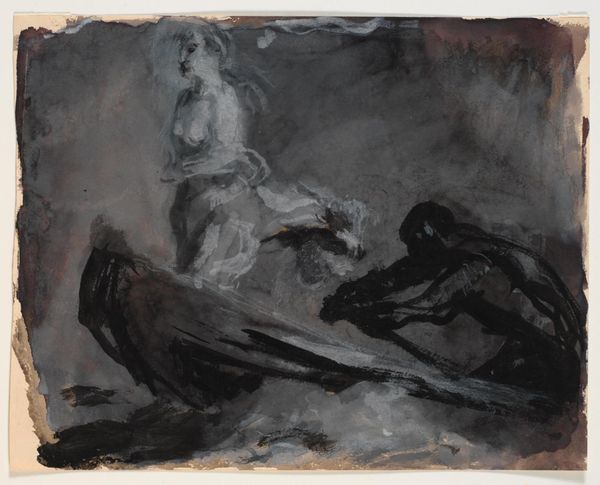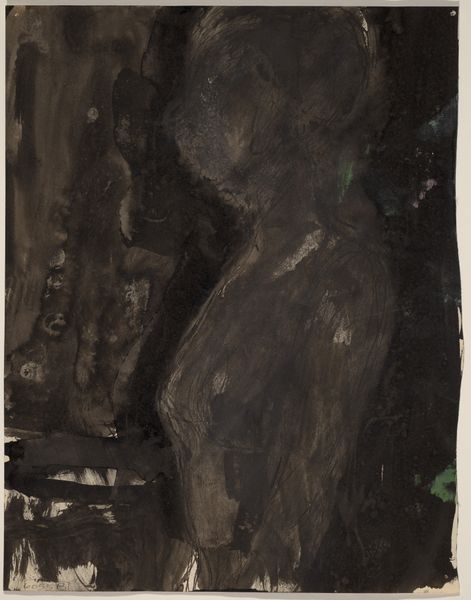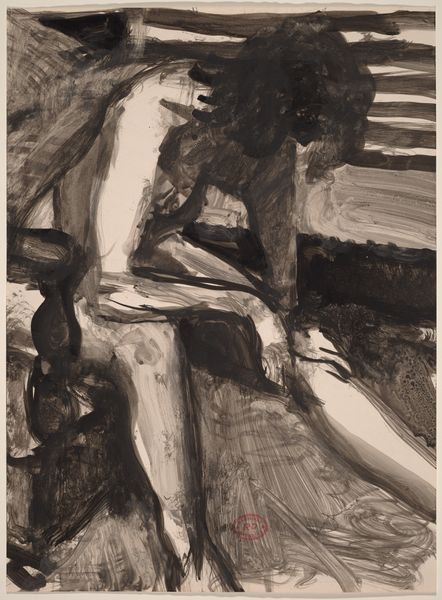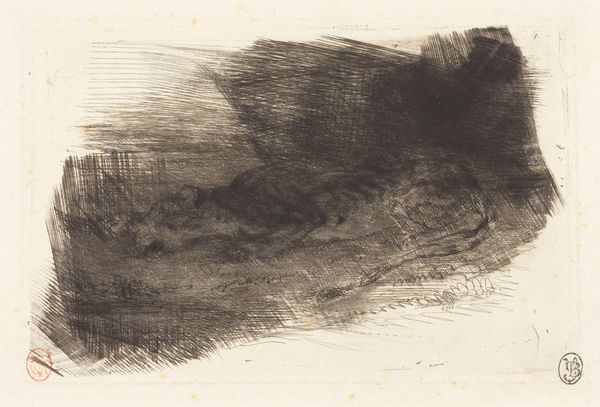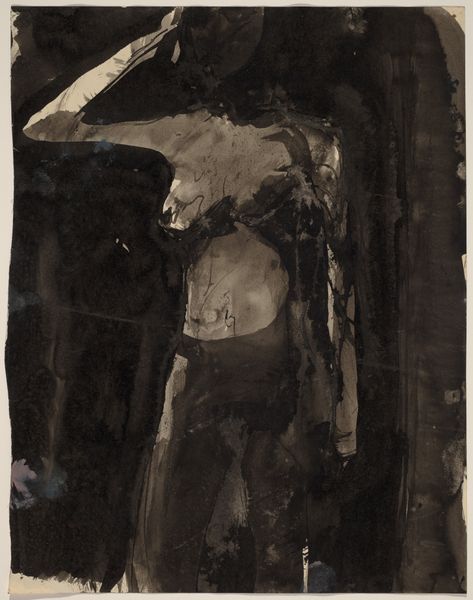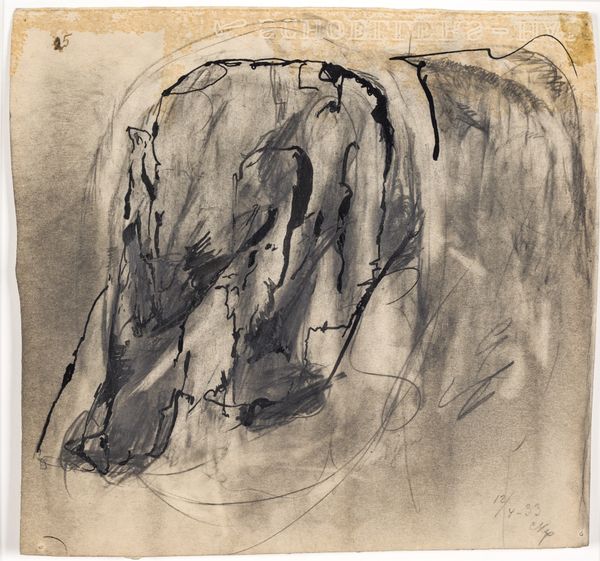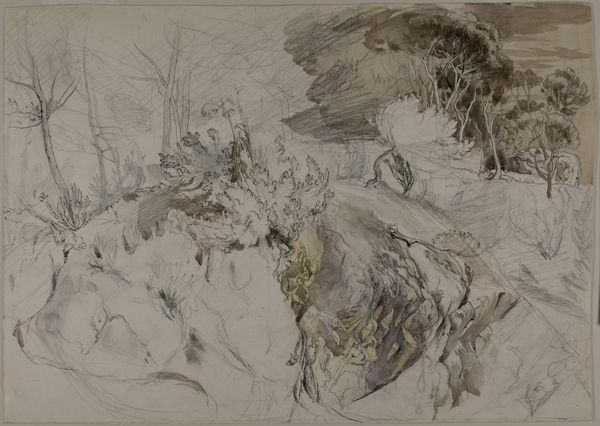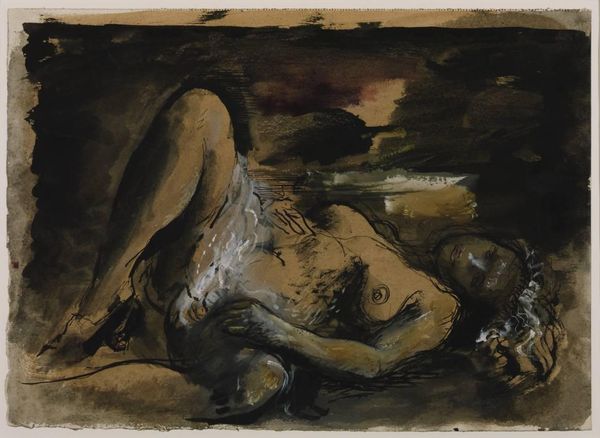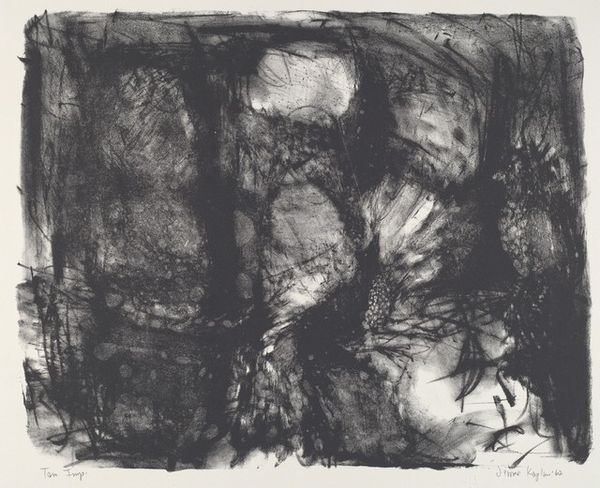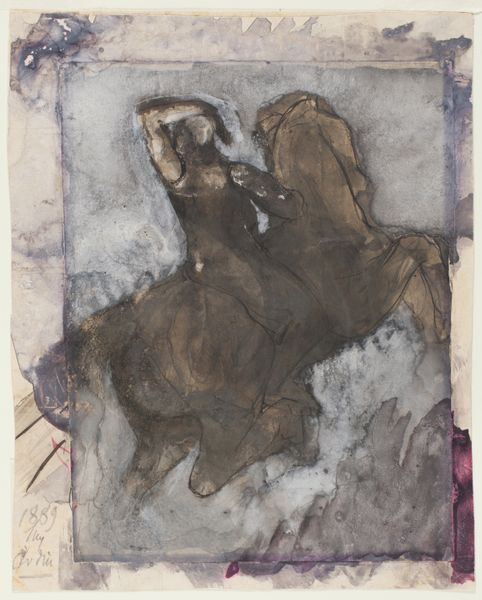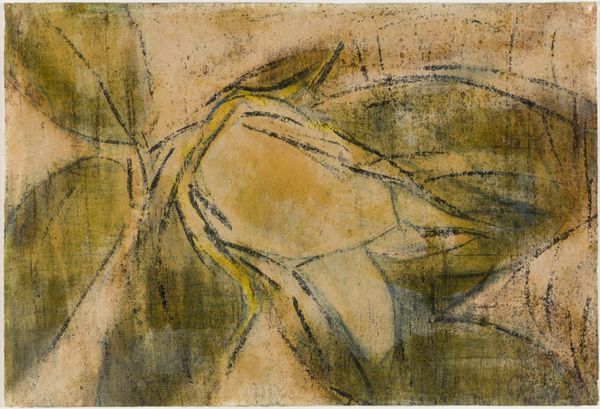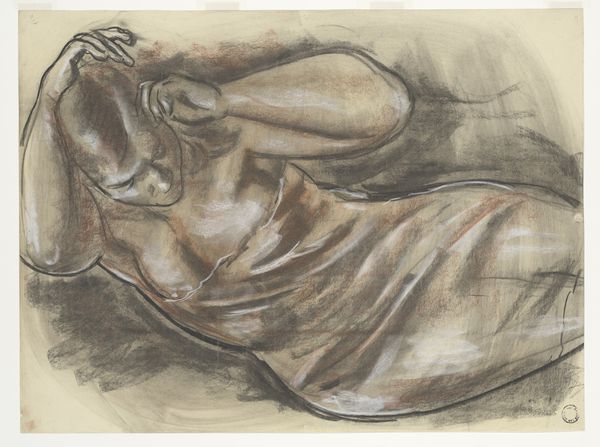
The Witches' Sabbath (recto); Sketches of Centaurs (verso) 1883 - 1889
0:00
0:00
Dimensions: 191 × 146 mm
Copyright: Public Domain
Curator: This drawing by Auguste Rodin, made sometime between 1883 and 1889, is called "The Witches' Sabbath." He worked it in ink, gouache, graphite, and perhaps a little oil. What do you make of it? Editor: Chaotic, definitely. I see tangled figures emerging from deep shadow, as if a hidden world is breaching into ours. Is it meant to be frightening, or perhaps alluring? There’s a palpable tension. Curator: Well, Rodin was fascinated by movement, by the grotesque, by the power of female sensuality. Here he seems to be exploring darker realms of fantasy. It aligns with a Symbolist aesthetic, wouldn't you agree, that embraced subjective experience over realism? Editor: Absolutely. The symbolism here can be interpreted in the context of 19th-century anxieties surrounding female sexuality and societal power dynamics. Witches have long been symbols of resistance against patriarchal structures. Do you think Rodin was aware of that resonance? Curator: Perhaps subconsciously, yes. I see the figures as almost archetypal. Consider the back of the work; Sketches of Centaurs; he was constantly reimagining mythological figures, pushing boundaries... experimenting with form and theme, inviting the viewer to complete the story in their mind's eye. Editor: It's also fascinating to view it through the lens of social upheaval in France at the time. The Third Republic was in full swing, with significant shifts in social norms and anxieties around tradition. Could the "witches" symbolize a fear of a changing world, of women claiming agency? Curator: It's an intriguing notion, this intersection of personal fantasy and sociopolitical anxiety. Editor: Art like this isn't just about aesthetic appeal, it reflects cultural undercurrents. Rodin may not have explicitly set out to make a political statement, but the themes he explored resonate deeply with questions of power, identity, and the role of women. Curator: That's a reminder of art's capacity to become a potent reflection on the society that shapes it, even unintentionally. Thanks, I think you made me see some new dimensions to Rodin’s thinking! Editor: Anytime! And for me, it reiterates art’s profound capability to incite dialogue and illuminate the intricate tapestry of human experience.
Comments
No comments
Be the first to comment and join the conversation on the ultimate creative platform.
